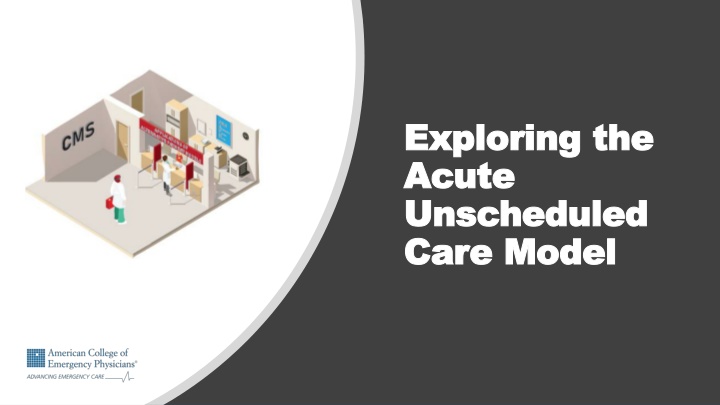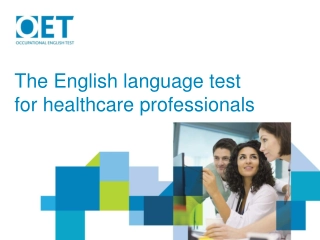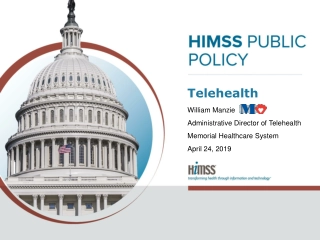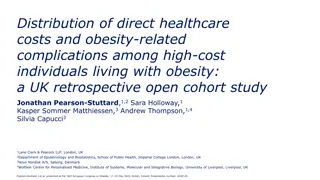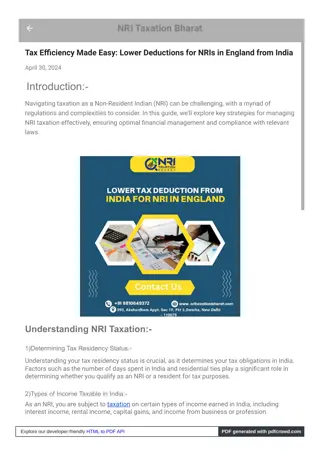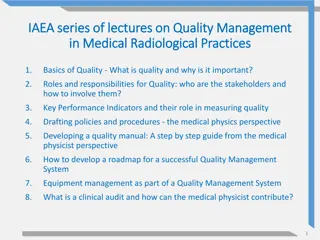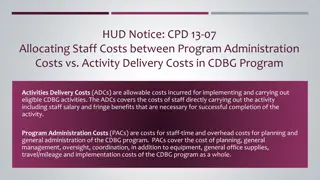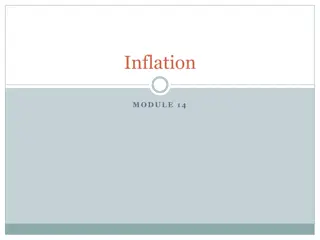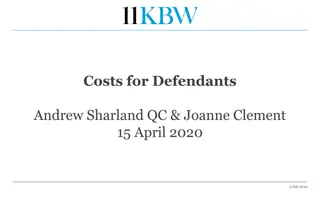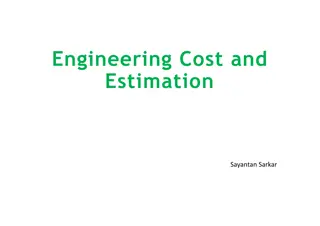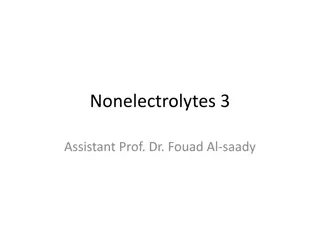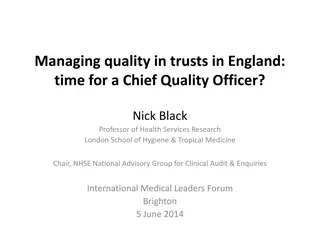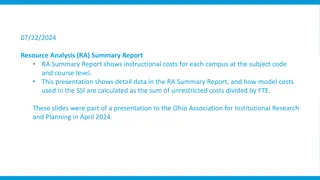Value-Based Healthcare Transformation: Improving Quality and Lowering Costs
Healthcare payors and stakeholders are embracing value-based models to enhance patient-centric care, reduce costs, and align provider incentives. Despite theoretical support, disagreements persist on the best approach for healthcare system reform, particularly regarding payment strategies and responsibility for driving change. Medicare's QPP program focuses on promoting physician-centered healthcare reform through alternative payment models.
Download Presentation

Please find below an Image/Link to download the presentation.
The content on the website is provided AS IS for your information and personal use only. It may not be sold, licensed, or shared on other websites without obtaining consent from the author.If you encounter any issues during the download, it is possible that the publisher has removed the file from their server.
You are allowed to download the files provided on this website for personal or commercial use, subject to the condition that they are used lawfully. All files are the property of their respective owners.
The content on the website is provided AS IS for your information and personal use only. It may not be sold, licensed, or shared on other websites without obtaining consent from the author.
E N D
Presentation Transcript
Exploring the Exploring the Acute Acute Unscheduled Unscheduled Care Model Care Model
Healthcare Focused on Value Over Volume and Patient-Centric Care Payors are making a concerted effort to invest in value-based models Our healthcare system is moving towards greater coordination and integration of services and systems to optimize resource utilization, improve quality, reduce overall costs, and align provider incentives Innovative payment and care-delivery efforts within Medicare (federally operated), Medicaid (state-based), and commercial markets signify payors, policymakers and other healthcare stakeholder's commitment to fostering a system that values quality and efficient patient-centric care Percent of payments flowing through shared accountability models Sources: https://hcp-lan.org/apm-measurement-effort/
Broad Theoretical Support But Disagreement Over Healthcare System Reform Strategy Physicians and employers/consumers agree a complete restructuring of our healthcare system is needed to encourage uptake of innovative payment and delivery models Payors are very optimistic about the futureof value-based arrangements and their capacity to lower healthcare costs and improve quality Physician and employer groups are split over who is responsible for driving reform contributing to delayed system progress. Sources: Jacqueline LaPointe. Doctors, Employers Disagree on Healthcare Payment Reform Strategy. (2018). https://revcycleintelligence.com/news/doctors-employers- disagree-on-healthcare-payment-reform-strategy
Medicares QPP Program Promotes Physician-Focuses Healthcare Reform APMs:CMS defines an APM as the rules and structures outlining the payments made to physicians and other clinicians that incentivize delivering high-quality and cost-efficient care. APMs can apply to a specific clinical condition, a care episode, or a population. Examples of APMs include accountable care organizations (ACOs), medical homes, and bundled payment models MACRA-defined APM MACRA defines an APM as any payment model being tested by CMMI or demonstration required by federal law as well as the Medicare Shared Savings Program (the national ACO program) Advanced APMs are subset of all MACRA-defined APMs that include additional requirements, such as having a nominal amount of financial risk MACRA-defined AAPM Other Payor-defined APM: The term APMs can also refer to payment models sponsored by payors other than CMS such as commercial insurers or state Medicaid agencies
Few Opportunities for EM Physicians to Directly Participate in CMS MACRA-defined APMs Barriers to EM participation in healthcare reform include: Most APMs have structured incentives that exclude initial care provided in the ED or designed with the explicit goal of avoiding all ED visits Misaligned Incentives Lack of tactical directions for implementation, frequent changes to policies and absence of unifying goals creates uncertainty and confusion among stakeholders interested in pursuing APMs Hospitals do not always have the structure in place to integrate EM physicians into these models Regulatory and Payor Clarity Infrastructure Gaps
The Acute Unscheduled Care Model (AUCM): Enhancing Appropriate Admissions
EM Physicians In Prime Position to Participate in Value-based Arrangements The AUCM is Awaiting Implementation* PTAC Submission ACEP submitted the AUCM proposal to the PTAC for consideration 2018 2017 2019 HHS Response The Secretary responded to the PTAC noting the core concepts of the AUCM should be incorporated into other APMs that CMMI is developing ACEP s AUCM To fill the gap in available APMs for EM physicians, ACEP developed a physician-focused payment model called the Acute Unscheduled Care Model (AUCM) PTAC Vote on AUCM PTAC recommended the model for full implementation to the HHS Secretary * ACEP has participated in CMMI meetings and they are beginning to review the AUCM for implementation
Developed for Medicare but Broadly Applicable The AUCM s Cross-Payor Potential The AUCM s Original Intention and Design The AUCM s Core Concepts The AUCM was developed with the intention of functioning within MACRA s QPP as a Medicare Advanced APM but the model was designed with enough flexibility that it s components could be adopted by different payors for various conditions regardless of practice size or geographic location Payors can begin to incorporate core concepts of the AUCM into other EM- focused APMs Adaptation may require some changes to various features of the model, thus new models will be different from the AUCM proposal that was submitted to the PTAC A non-Medicare version of the AUCM would be an ideal APM construct for Medicaid and private payors to pursue as they continue moving away from fee- for-service contracts towards value-based payment arrangements
The AUCM is Specifically Designed for Direct EM Physician Participation Seeks to reduce inpatient admissions and observation stays when appropriate through enhanced care coordination Directly engages EM physicians by accepting financial risk attributed to discharge disposition decisions within qualifying episodes of acute unscheduled care Ensures EM physicians have the necessary tools to facilitate to make the decision to provide safe, efficient outpatient care
The AUCM is Voluntary and Flexible Turn-key Elements: Built on traditional fee-for- service Medicare payments but provides financial incentives linked to patient outcomes EM physicians and groups can participate regardless of employment model Current CMS Program Alignment Readmission Reduction Program Hospital Acquired Condition Reduction Program Transitional Care Management Payments CJR Model BPCI Advanced
The AUCM Care Delivery Process The AUCM Care Delivery Process Admission to Inpatient/ Observation Stay AUCM Ineligible NO NO Work Up & Management Ambulatory Discharge Disposition Decision- Home? YES Shared Discharge Decision-Making AUCM Eligible? Possibility of Discharge? YES Ambulance Administer Safe Discharge Assessment YES NO Contact Specialist/PCP Hospitalization Specialty Consultation Primary Care Medications Safety Clinician Provide Instructions for Follow-up Care Care Coordinator Observation Status Inpatient Status Routine Process Monitor Follow-up With Primary Care Provider Performance Measure
The AUCM Includes Waivers to Support EM Physicians Emergency physicians will be allowed to provide telehealth services into the beneficiary s home or residence and to bill one of the in-home visits under the same waiver that was put in place in the Next Generation ACO Model and other APMs. Telehealth Licensed clinical staff may provide home visits under the general supervision of an emergency physician to eligible Medicare beneficiaries. The providers may bill these services utilizing the same G-codes utilized in other APMs. Post Discharge Home Visit Authorize emergency physicians to bill for a transitional care management code. This could be done utilizing the current CPT codes (99494 and 99496) or the ED specific Acute Care Transition codes submitted to the CPT Editorial panel in 2016. Transitional Care Management
Physician Reimbursement Encourages Improved ED Performance Under the AUCM, participants receive positive or negative reconciliation payments based on performance metrics and quality measure scores If actual cost of an episode is less than the pre-determined price; participants share the savings (participants keeps a portion of the difference) Positive Reconciliation Negative Reconciliation If actual cost of an episode is higher than the pre-determined price; participants share the losses (participants owes a portion of the difference to Medicare) The facility-specific episode benchmark is set using 3 years of historical claims data; it is then risk-adjusted and used to determine the episode- specific target price which is used by CMS to determine a positive or negative reconciliation payment to the participant Pre-Determined Price
Incentives Tied to the Quality of ED Care Delivered Provider performance metrics in key quality measure categories determine reconciliation payments and the size of the discount built into the pre-determined price The Quality Measures and Performance Metrics Include: Through completion of Safe Discharge Assessment Patient Engagement Engagingin Shared Decision Making about discharge plan Process of Care Coordination Utilizing the Event-free Post-discharge Rate to determine if an unfavorable post-ED event occurred during the discharge period Post-discharge Outcomes
The AUCM Fosters Patient-Centric Redesign and Direct Engagement Patient-centric efforts built-in SDA and direct engagement through shared decision making Monitoring post-discharge events ensures efforts to decrease cost of care Follow-up services built into the model may positively impact patient satisfaction scores EM physicians are directly engaged to improve quality of care and reduce healthcare system costs through the adoption of patient-centric care redesigns that identifies at-risk patients and enhances their post-ED discharge care Improves clinician s capacity to deliver safe, valuable, and efficient care ED clinicians are empowered to make the right disposition decision for the right patient at the right time.
Positive and Proactive Value-based Effort to Reduce System Costs Value Over Volume Estimated Cost Savings Provides healthcare systems an opportunity to effectively and proactively engage in transformation efforts through a novel EM- focused value-based arrangement Improve scores in other CMS programs and save money through built-in metrics Supports efforts to decrease ED boarding addressing high-occupancy concerns Reducing admissions for the qualifying four high-frequency conditions stipulated under the AUCM will yield substantial savings for Medicare: A 3% decrease in admission rates could reduce spending by approximately $314 million in the first year An 8% decrease in admission rates over the first three years of the model could save over $840 million annually Sources: American College of Emergency Physicians. The AUCM Proposal. (2018) https://aspe.hhs.gov/system/files/pdf/255906/ACEPResubmissionofAUCMtoPTAC.PDF
Stakeholders across the healthcare system are interested in efforts to increase patient quality and improve costs through value-based arrangements Physician participation is value-based reform efforts benefits the entire healthcare system yet there are no avenues for EM physicians to directly participate ACEP developed the AUCM to provide EM physicians with an opportunity to participate directly in an Advanced APM; while designed for Medicare, components of the AUCM could be utilized across payors Stakeholders are encouraged to gain a deeper understanding of the AUCM and begin laying the groundwork for EM transformation discussions
Learn More About the AUCM ACEP s the Acute Unscheduled Care Model Homepage: www.acep.org/apm PTAC Homepage: https://aspe.hhs.gov/ptac-physician-focused-payment-model-technical-advisory-committee American College of Emergency Physicians. The AUCM Proposal. (2018) https://aspe.hhs.gov/system/files/pdf/255906/ACEPResubmissionofAUCMtoPTAC.PDF Letter of Intent: https://aspe.hhs.gov/system/files/pdf/255906/LoIACEP.PDF Public Comments: https://aspe.hhs.gov/system/files/pdf/255906/ACEPPublicComment.pdf Preliminary Review Team (PRT) Report: https://aspe.hhs.gov/system/files/pdf/259886/PRT_Report_ACEP_08-13- 18_508.pdf Additional Information from Submitter: https://aspe.hhs.gov/system/files/pdf/255906/AdditionalInformationfromSubmitterACEP.pdf Additional Information/Analyses: https://aspe.hhs.gov/system/files/pdf/255906/AdditionalInformationorAnalysesACEP.pdf Additional Information/Analyses Data Tables: https://aspe.hhs.gov/system/files/pdf/255906/AddlInfoorAnalyses- DataTablesACEP.pdf Committee Member Disclosures: https://aspe.hhs.gov/system/files/pdf/259886/ACEP_Disclosures_508.pdf Report to the Secretary: https://aspe.hhs.gov/system/files/pdf/255726/ReportToTheSecretary_ACEP_10.20.18.pdf
Learn More About ACEPs Clinical Emergency Data Registry (CEDR) Clinical Emergency Data Registry (CEDR) was developed by ACEP as the first EM specialty- wide registry to measure acute care quality, outcomes, practice patterns, and trends in emergency care CEDR, a qualified clinical data registry (QCDR), is primarily used as a mechanism for helping EM physicians and other providers meet reporting and attestation requirements in MIPS (Track 1 for physician participation in MACRA s Quality Payment Program) The CEDR registry ensures that physicians, rather than other parties or payors, are identifying what works best for their own clinical practice and patients Additional Information: https://www.acep.org/federal-advocacy/federal-advocacy-overview/APM
Medicare AAPM Participation and Clinical Emergency Data Registry (CEDR) One of ACEP s goals for the APM Initiative is to help EM physicians directly participate Medicare AAPMs (Track 1 for physician participation in MACRA s QPP) through the QPP newly available All-Payer Option The AUCM is still under development at CMS, so most EM physicians are still required to participate in MIPS and can continue to use or consider using CEDR for reporting EM physicians may begin qualifying for additional payments and avoid reporting in MIPS if CMMI decides to incorporate elements of the AUCM into an existing Medicare AAPM of if other payors utilize the AUCM framework to qualify for the All-Payor Option CEDR will remain integral to measuring quality of care and providing essential data for transitioning into new payment models Additional Information: https://www.acep.org/federal-advocacy/federal-advocacy-overview/APM/
Citations American College of Emergency Physicians (ACEP). Regs & Eggs. The Awesome AUCM Model. (2019). https://www.acep.org/federal- advocacy/federal-advocacy-overview/regs-eggs/regs--eggs8/ American College of Emergency Physicians (ACEP). Regs & Eggs. This Just In: The HHS Secretary Thinks AUCM is Awesome! (2019). https://www.acep.org/federal-advocacy/federal-advocacy-overview/regs-eggs/regs--eggs1032019/ Centers for Disease Control (CDC). National Hospital Ambulatory Medical Care Survey: 2016 Emergency Department Summary Tables. (2016). https://www.cdc.gov/nchs/data/nhamcs/web_tables/2016_ed_web_tables.pdf Center for Improving Value in Healthcare (CIVHC). Colorado s Accountable Care Collaborative. https://www.civhc.org/change-agent- gallery/colorados-accountable-care-collaborative/ Centers for Medicare and Medicaid Services. Health Care Innovation Awards: Project Profile. Mount Sinai School of Medicine. (2020). https://innovation.cms.gov/initiatives/participant/Health-Care-Innovation-Awards/Mount-Sinai-School-Of-Medicine.html Centers for Medicare and Medicaid Services (CMS). MACRA About. (2019). https://www.cms.gov/Medicare/Quality-Initiatives-Patient-Assessment- Instruments/Value-Based-Programs/MACRA-MIPS-and-APMs/MACRA-MIPS-and-APMs Centers for Medicare and Medicaid Services (CMS). QPP Program Overview. (2019). https://qpp.cms.gov/apms/overview Colorado Center on Law and Policy. The Colorado Medicaid Accountable Care Collaborative Program. (2011). http://www.healthpolicyproject.org/Publications_files/Medicaid/ColoradoAccountableCarePresentation.pdf
Citations Health Care Payment Learning & Action Network (HCP-LAN). APM Framework. (2017). https://hcp-lan.org/apm-refresh-white-paper/ Health Care Payment Learning and Action Network (HCP LAN). APM Measurement Effort. https://hcp-lan.org/apm-measurement-effort/ Health Care Payment Learning & Action Network (HCP-LAN). APM Framework. (2017). https://hcp-lan.org/apm-refresh-white-paper/ Health Leaders. Highmark Health, Contessa Launch Home-Based Acute Care Model. (2019). https://www.healthleadersmedia.com/innovation/highmark-health-contessa-launch-home-based-acute-care-model Jacqueline LaPointe. Doctors, Employers Disagree on Healthcare Payment Reform Strategy. (2018). https://revcycleintelligence.com/news/doctors- employers-disagree-on-healthcare-payment-reform-strategy Leavitt Partners. Medicare Alternative Payment Models: Not Every Provider Has a Path Forward. (2017). https://leavittpartners.com/whitepaper/medicare-alternative-payment-models-not-every-provider-path-forward/ Martine Sanon, Ula Hwang, Gallane Abraham, et al.. ACE Model for Older Adults in ED. (2019). https://www.ncbi.nlm.nih.gov/pmc/articles/PMC6473391/#!po=73.5294 Modern Healthcare. Highmark Health to deliver hospital care at home. (2019). https://www.modernhealthcare.com/home-health/highmark-health- deliver-hospital-care-home?utm_source=modern-healthcare-daily-dose- wednesday&utm_medium=email&utm_campaign=20191113&utm_content=article2-readmore Nursing Center. GEDI WISE Model Feasible for Geriatric Emergency Care. (2015). https://www.nursingcenter.com/healthdayarticle?Article_id=699162
Glossary Benchmark Price - A metric used by CMS, together with the CMS Discount, to calculate an Episode Initiator-specific Target Price for each Clinical Episode. Bundled Payment / Bundling A predetermined payment amount for all items and services (including physician, hospital, and other healthcare provider services) furnished during an episode of care. In the AUCM, this is paid retrospectively. Care Redesign Model- A model that includes the following services: care coordination services, the use of a Safe Discharge Assessment Tool (SDA), shared-decision making with patients and families regarding discharge disposition and contact with primary care provider or their designee. Clinical Episode The defined period of time triggered by the submission of a claim for a Qualifying ED Visit (Anchor Event) during which all Medicare FFS expenditures for all non- excluded items and services furnished to a Medicare Beneficiary are bundled together as a unit for purposes of calculating the Target Price and for purposes of Reconciliation. CMS Discount A set percentage by which CMS reduces the Benchmark Price to calculate the Target Price. In the AUCM proposal, a 1.5% to 3% discount would be applied to historical inpatient and non-ED observation spending calculated using 3- year historical data.
Glossary Eligible Beneficiary A Medicare beneficiary entitled to benefits under Part A and enrolled under Part B on whose behalf an Episode Initiator submits a claim to Medicare FFS for a qualified ED visit associated with a Clinical Episode for which a Participant has committed to be held accountable. Eligible Beneficiary specifically excludes: (1) Medicare beneficiaries covered under United Mine Workers or managed care plans (e.g., Medicare Advantage, Health Care Prepayment Plans, or cost-based health maintenance organizations); (2) beneficiaries eligible for Medicare on the basis of end-stage renal disease (ESRD); (3) Medicare beneficiaries for whom Medicare is not the primary payer; (4) Medicare beneficiaries enrolled in the hospice benefit; and those who die during the qualifying ED visit or within 30 days of discharge. Beneficiaries who have been discharged from an inpatient stay in the prior 90 days or who have had an ED visit without admission or observation within the prior 30 days are also ineligible. Emergency Department Disposition Decision- the decision by an ED physician to complete care in the emergency department. Potential ED dispositions include 1) ED- discharged home; 2) ED observation stay- discharged home; 3) ED- non-ED observation stay; and 4) ED- inpatient admission. (This final category includes patients who were dispositioned to non-ED observation stay, who were ultimately transitioned to inpatient status.) Excluded Conditions- Conditions for which the national historical admission rate is 90%. Medicare Fee-for-Service (FFS) Medicare Part A and Part B. The term Medicare FFS does not include Medicare Part C (Medicare Advantage) or Medicare Part D. Model Year A full or partial calendar year during the Performance Period of the Model.
Glossary Negative Reconciliation Amount -- If applicable, the amount by which all non-excluded Medicare FFS expenditures for a Clinical Episode exceeds the final Target Price for that Clinical Episode. This amount is summed across all Clinical Episodes attributed to a Participant at an ACH, together with all Positive Reconciliation Amounts for such Clinical Episodes, to determine either the Positive Total Reconciliation Amount or the Negative Total Reconciliation Amount, as applicable, for that Participant. Negative Total Reconciliation Amount If applicable, the negative sum of all Negative Reconciliation Amounts and all Positive Reconciliation Amounts for all Clinical Episodes at an ACH attributed to a Participant. CMS will adjust the Negative Total Reconciliation Amount by an Episode-Initiator-specific CQS Adjustment Amount to calculate the Adjusted Negative Total Reconciliation Amount. Participant An emergency department physician group practice or Acute Care Hospital that enters into a Participation Agreement with CMS to participate in the AUCM model. Patient Safety Measures- Measures that are designed to capture the occurrence of patient safety events that occur in the 7 days subsequent to an ED visit. A national benchmark for these measures will be defined based performance across all ACH-based emergency departments. Performance Period The defined period of time during which Clinical Episodes may be triggered Physician Group Practices (PGPs) Medicare-enrolled physician group practices.
Glossary Positive Reconciliation Amount If applicable, the amount by which all non-excluded Medicare FFS expenditures for a Clinical Episode is less than the final Target Price for that Clinical Episode. This amount is summed across all Clinical Episodes attributed to the facility, together with all Negative Reconciliation Amounts for such Clinical Episodes, to determine either the Positive Total Reconciliation Amount or the Negative Total Reconciliation Amount, as applicable, for that Episode Initiator. Post-Episode Spending Monitoring Period The period of 30 days after the end of a Clinical Episode during which Medicare FFS spending for items and services furnished to BPCI Advanced Beneficiaries is monitored by CMS for purposes of conducting the Post-Episode Spending Calculation. Qualified ED Visit An emergency department visit by an eligible Beneficiary identified by a qualifying ICD-10 diagnosis code identified for which a Participant submits a claim to Medicare FFS, which in turn triggers a Clinical Episode. A qualified ED visit is an Anchor Event. Reconciliation The semi-annual process of comparing the aggregate Medicare FFS expenditures for all items and services included in a Clinical Episode attributed to the Participant against the Target Price for that Clinical Episode in order to determine whether the Participant is eligible to receive an NPRA payment from CMS or is required to pay a Repayment Amount to CMS. Safe Discharge Assessment- an assessment of qualifying Medicare Beneficiaries using a publicly available, validated tool used to assess vulnerability for post- emergency department adverse outcomes. Start Date The first day of the first Performance Period after a Participant begins participating in the Model. Target Price a figure determined by CMS for each presenting condition utilizing historical claims. The target price is specific to the participating Acute Care Hospital (facility).
